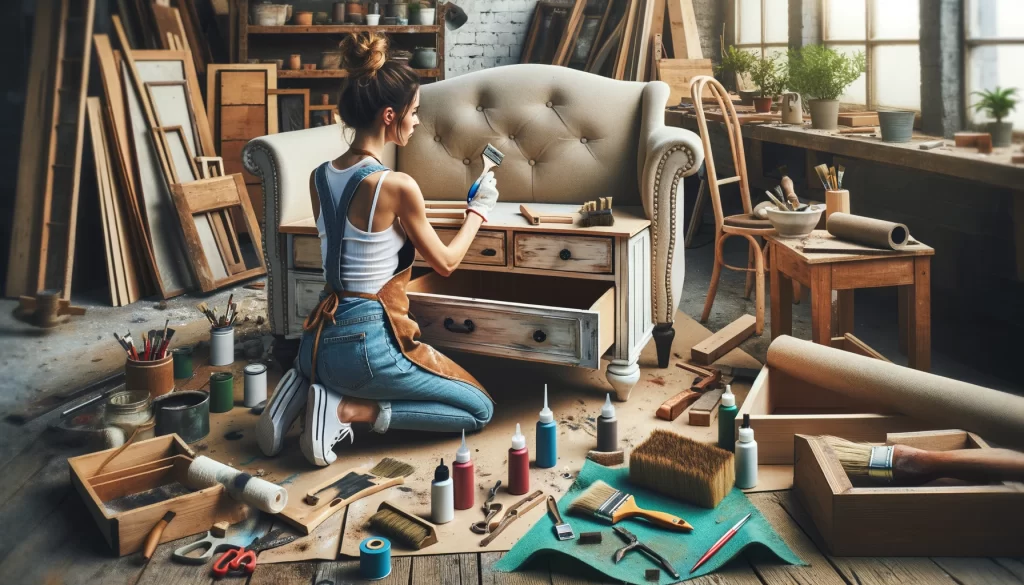In a world where sustainability is becoming increasingly important, Refinishing old furniture is not just a fun DIY project, but also an eco-friendly practice. This guide will walk you through the process of giving a new lease of life to old furniture, turning it into a piece that’s both stylish and functional.
Why Refinish Old Furniture?
Refinishing is all about transforming outdated or unused furniture into something beautiful and useful. It’s a creative way to reduce waste, save money, and personalize your living space. Each upcycled piece tells a story and adds character to your home.
Materials and Tools Needed
- Old furniture piece
- Sandpaper or a sanding tool
- Paint or stain
- Brushes or rollers
- Screws and nails (if needed for repair)
- Fabric and upholstery tools (if applicable)
- Protective gear (gloves, mask)
Steps for Refinishing Old Furniture
Step 1: Choosing the Right Piece
Start with selecting a piece of furniture to upcycle. Look for items that are structurally sound but just need a cosmetic lift. Thrift stores, garage sales, and even your own attic are great places to find such pieces.
Step 2: Cleaning and Prepping
Clean the furniture thoroughly. Remove any hardware like handles or knobs. Sand the surface to remove old paint or varnish and to create a smooth base for new paint or stain.
Step 3: Repairing and Replacing Parts
Inspect the piece for any damage. Tighten loose screws, replace broken parts, or reinforce weak areas. This step is crucial for ensuring the longevity of the furniture.
Step 4: Painting or Staining
Choose a paint or stain that fits your vision for the piece. Apply it evenly, following the grain of the wood. Multiple coats may be required for a polished look. Let it dry completely between coats.
Step 5: Adding Finishing Touches
This is where you get to be really creative. Add new handles or knobs, apply decorative elements, or reupholster if it’s a piece of soft furniture. These details can drastically change the look and feel of the piece.
Step 6: Protecting Your Finished Piece
Apply a sealant or topcoat to protect the paint or stain, ensuring durability and making it easier to clean.
Customization Ideas
Experiment with different techniques like distressing, decoupage, or stenciling to create a unique look. Mix and match styles for a piece that’s uniquely yours.
Environmental Impact
By upcycling, you’re reducing waste and minimizing the carbon footprint associated with new furniture production. It’s a small step towards a more sustainable lifestyle.
Conclusion
Refinishing Old Furniture is a fulfilling way to merge creativity with eco-consciousness. It’s about seeing the potential in the old and worn and transforming it into something new and beautiful. So, roll up your sleeves and give your old furniture a new life.




